Climate change (CC) is causing many extreme and abnormal weather patterns that have been negatively affecting agricultural production in localities in the province. Therefore, the Department of Agriculture and Rural Development (DARD) and localities are making efforts to find solutions to develop agricultural production that is adaptive to CC in order to ensure productivity and quality of agricultural products and maintain the growth rate of the sector.
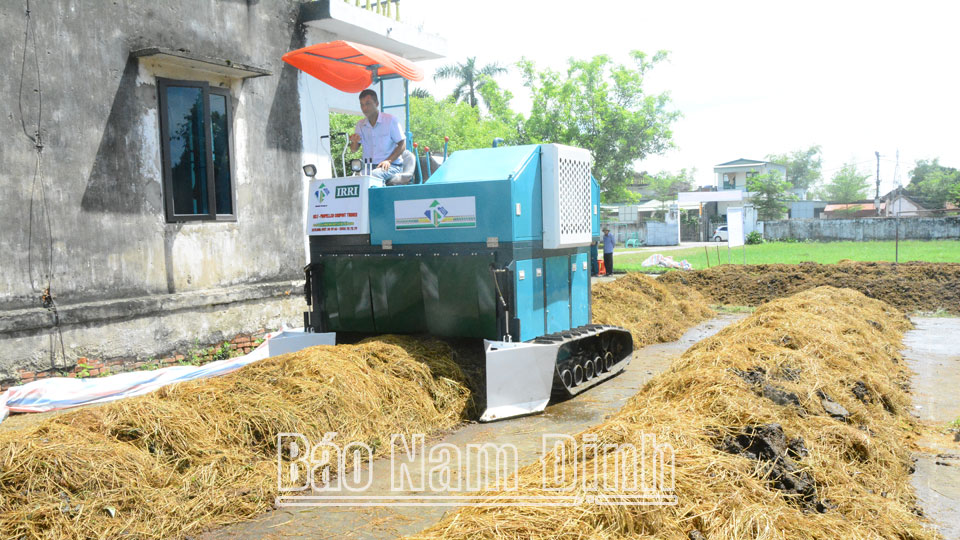 |
| Model of using straw and rice husk mixing machine to produce organic fertilizer for growing vegetables according to VietGAP standards at Nam Cuong Agricultural Production and Service Cooperative, Yen Cuong commune (Y Yen). |
Every year, Nam Dinh has more than 200,000 hectares of agricultural land, of which about 150,000 hectares are used for two rice crops: spring and summer. Cultivation depends heavily on natural conditions, so it is greatly affected by climate change. Comrade Nguyen Van Huu, Deputy Director of the Department of Agriculture and Rural Development, said: In recent years, the agricultural sector has made efforts to change the production mindset of agricultural, livestock and aquaculture cooperatives, especially farmers, from working based on experience to applying science and technology, proactively building and implementing solutions to adapt to changes in climate, and respond to adverse weather and climate. Specifically, in order to create time for summer and winter crop production, the agricultural sector has directed districts and cities to focus on directing and guiding farmers to increase mechanization of the harvest stage to ensure quick and neat spring rice; at the same time, increase mechanization of land preparation to speed up progress; As spring rice is harvested, the soil is prepared, combined with the use of products that quickly decompose straw and stubble, minimizing the phenomenon of poisoning in the soil, affecting the summer-autumn rice crop. Implement the planting of summer-autumn rice on schedule and within the best time frame; use short-term, high-quality rice varieties and some disease-resistant rice varieties to improve productivity, quality and production efficiency.
Along with changes in production management methods, the planning of production areas is also focused on, ensuring that it is suitable for the practical situation, customs and farming psychology of farmers. Up to now, the whole province has built nearly 400 large fields with a total area of 18,599 hectares, of which 3,916 hectares have been purchased by enterprises and cooperatives for farmers. Of these, there are 374 rice fields with an area of 17,758 hectares and 25 large fields specializing in growing vegetables and medicinal plants with a total area of 814 hectares. The construction of "large fields" is an important basis for forming and stably maintaining 39 production and business chains associated with the consumption of agricultural products to ensure food safety and hygiene in the province. Typical are the production - consumption chains of hybrid rice and pure rice varieties of Cuong Tan Company Limited (Truc Ninh), Nam Dinh Seed Joint Stock Company, Xuan Truong General Production Joint Stock Company (Xuan Truong); the production chain of high-quality rice and rice of Toan Xuan Company Limited (Y Yen), Quynh Thanh Company Limited (Truc Ninh) with agricultural cooperatives and farmers in the districts: Truc Ninh, Hai Hau, Nam Truc, Vu Ban and Nam Dinh city; the organic fertilizer production model for safe vegetable cultivation following VietGAP and Japanese technology of Nam Cuong Agricultural Service Business Cooperative, Yen Cuong commune (Y Yen); the linkage chain of Nam Phat Investment Joint Stock Company with a number of pig slaughterhouses ensuring veterinary hygiene and food safety in the province; the linkage chain of processing clean clams, frozen clams, canned clam meat of Lenger Vietnam Seafood Company Limited at An Xa Industrial Cluster (Nam Dinh city).
Not only promoting development and building climate change adaptation models in localities, the agricultural sector also focuses on changing the mindset and production methods of agricultural cooperatives, especially farmers, through trade promotion conferences; consulting and supporting production, business and processing establishments of agricultural products. In the past year, the Department of Agriculture and Rural Development has coordinated with relevant departments and branches to successfully organize an agricultural trade promotion conference and a typical agricultural product exhibition area; organizing a Safe Agricultural Products Week with the participation of 150 enterprises, production establishments and cooperatives with over 850 products in Nam Dinh city; Supported the province's establishments and enterprises to participate in 20 fairs, seminars, conferences to connect, introduce and promote the province's typical products in Ho Chi Minh City, Hanoi, Thai Nguyen, Ninh Binh, Nam Dinh, Quang Ninh... In addition, the Department of Agriculture and Rural Development also consulted and supported 44 food production and processing establishments to develop standards and announce quality standards for 82 products, build product labels and brands. In particular, it supported the Nam Dinh Clean Agriculture Association to promote product promotion and introduction activities and expand the agricultural product retail system. Thanks to that, up to now, the whole province has had more than 100 convenience stores specializing in providing safe agricultural food products, contributing to the development of clean agricultural production. In addition, the Department of Agriculture and Rural Development also coordinated well the international cooperation program in the agricultural sector between Nam Dinh province and Japanese provinces, the afforestation projects to respond to climate change sponsored by the Green Climate Fund and the Government of Korea... Through the above activities, it has helped farmers gradually change their thinking and production methods, reduce the amount of seeds in rice cultivation, reduce 10-20% of chemical fertilizers used in plant care; reduce the number of times pesticides are used compared to traditional farming. Know how to apply fertilizer appropriately according to each growth stage of rice and vegetables; proactively cultivate and adapt to climate patterns such as drought, rain, flood, and saline intrusion. Actively utilize straw, waste, and agricultural by-products to reproduce organic fertilizers, or as raw materials and growing media for other crops (mushroom cultivation), reduce emissions to the environment, protect public health, limit water and soil pollution, and increase income value for producers.
Adapting well to climate change is an urgent requirement for the agricultural sector to continue to develop in the direction of increasing income value per unit of cultivated land area. Therefore, all levels, sectors and localities need to be deeply aware of the negative impacts of climate change on agricultural production, thereby actively and proactively taking drastic action, promoting propaganda, mobilization and applying appropriate production models for farmers to follow, contributing to promoting the development of agricultural production.
Article and photos: Van Dai
Source: https://baonamdinh.vn/kinh-te/202409/doi-moi-nganh-trong-trot-thich-ung-voi-bien-doi-khi-hau-7cb22c6/










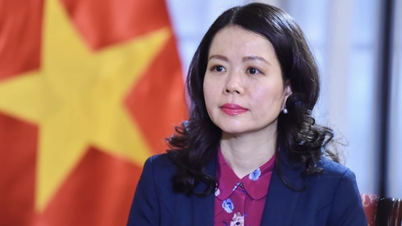






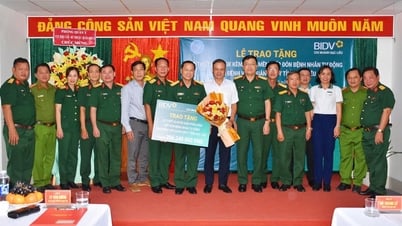
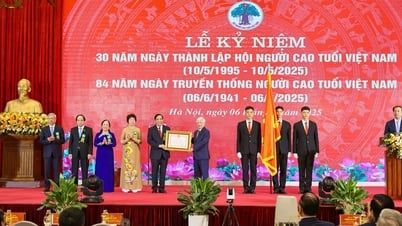

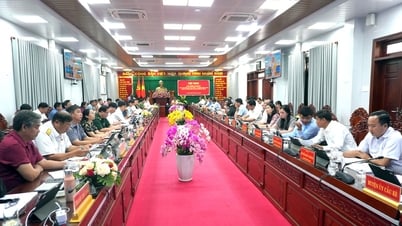













![[Photo] General Secretary To Lam receives Korean Ambassador to Vietnam](https://vphoto.vietnam.vn/thumb/1200x675/vietnam/resource/IMAGE/2025/6/6/a0765b7543784cbcbfe4755b67d43ab4)

![[Photo] President Luong Cuong works with Hung Yen and Thai Binh Provincial Party Committees on implementing Resolution of the 11th Central Conference, 13th tenure](https://vphoto.vietnam.vn/thumb/1200x675/vietnam/resource/IMAGE/2025/6/6/127b735d2761484d81dcee0d7725a25b)


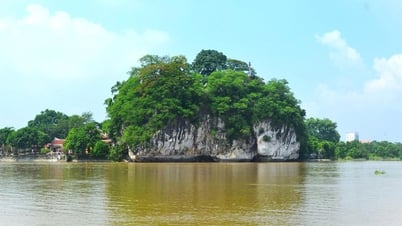






















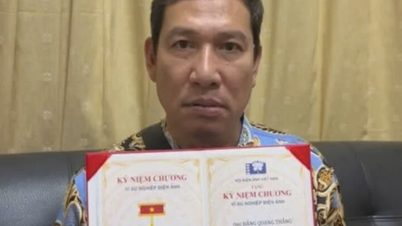
















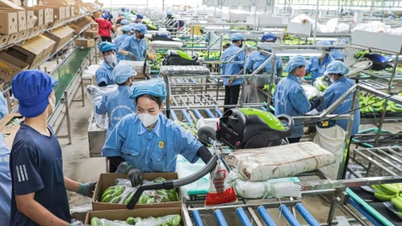


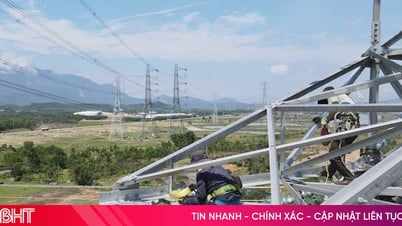








![[OCOP REVIEW] Tu Duyen Syrup - The essence of herbs from the mountains and forests of Nhu Thanh](https://vphoto.vietnam.vn/thumb/402x226/vietnam/resource/IMAGE/2025/6/5/58ca32fce4ec44039e444fbfae7e75ec)





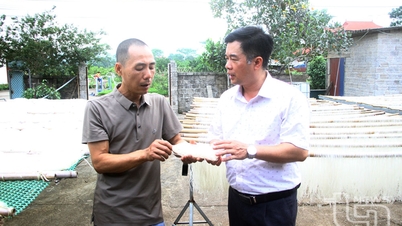





Comment (0)